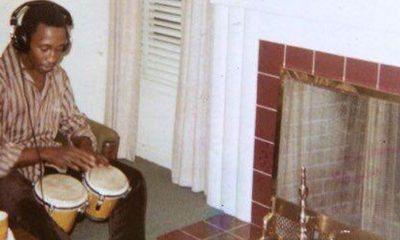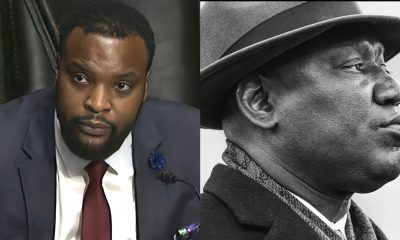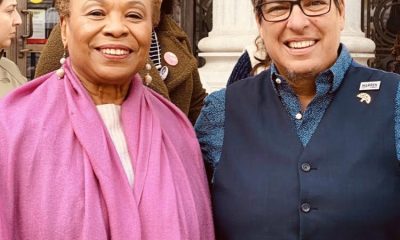Politics
Hearings Starting on Governor’s Tactics for Ferguson Unrest

In this Monday Nov. 24, 2014 file photo, people walk away from a storage facility on fire after the grand jury decision was announced in Ferguson, Mo. More than 700 National Guard troops were stationed preemptively throughout the St. Louis region. But Missouri Gov. Jay Nixon was inundated with criticism for not deploying the Guard outside businesses along a prominent Ferguson road where looting and arson had occurred after Michael Brown’s Aug. 9 shooting. (AP Photo/Jeff Roberson, File)
DAVID A. LIEB, Associated Press
JEFFERSON CITY, Mo. (AP) — As businesses were burned and looted in Ferguson, Missouri Gov. Jay Nixon was inundated with messages from the public criticizing him for not using the National Guard to prevent the civil unrest that followed a grand jury’s decision in the Michael Brown case.
Documents provided to The Associated Press under an open records request show Nixon received hundreds of online messages from people in the St. Louis area and across the country expressing bewilderment, frustration and outrage that guardsmen were not preemptively deployed to the most troubled locations.
A Missouri legislative committee is to begin holding hearings Wednesday aimed at determining why not. The bipartisan panel is to first hear testimony from local officials as a prelude to calling upon members of Nixon’s administration in the coming weeks.
A Nixon spokesman said Tuesday that the Guard was intended to provide a “support role,” so that hundreds of law enforcement officers could be devoted to policing the area. The governor has said previously that he was pleased there were no deaths in the riots but was “somewhat surprised by the amount of violence” that occurred the night of Nov. 24, when a prosecutor announced that grand jurors had decided not to charge Ferguson officer Darren Wilson, who is white, for killing the unarmed 18-year-old Brown, who was black.
Nixon had declared a state of emergency a week ahead of the grand jury announcement and had said the Guard would help local authorities “protect life and property.” That drew a mixed reaction from St. Louis area residents, with some sending Nixon thankful messages and others expressing concern that the military’s presence would inflame an already tense situation.
When the grand jury decision was announced, more than 700 guardsmen were stationed preemptively throughout the St. Louis region and nearly 500 law officers were in Ferguson. But no guardsmen were positioned outside businesses along a prominent Ferguson road where looting and arson had occurred after Brown’s Aug. 9 shooting.
“A lot of state resources were put into that and then apparently not really used — or used in a manner that’s not being fully explained,” said Sen. Kurt Schaefer, chairman of the Joint Committee on Government Accountability, which is holding the hearings.
Moments after the grand jury announcement, some protesters began looting and setting fires to businesses and vehicles in Ferguson and the nearby suburb of Dellwood. The National Guard was not on the scene as television networks carried live coverage of the destruction.
“Ferguson businesses are being looted and burned. Where are the National Guard?” Ferguson resident Sharon Heidemann wrote late on Nov. 24 in one of first such messages sent to Nixon through the public “contact” section of his website.
Over the next 24 hours, Nixon’s office received about 500 messages critical of his response. He got barely a dozen messages supporting his actions.
“Shame on you for letting Ferguson burn,” Ferguson resident Michael Pierce wrote shortly after midnight on Nov. 25.
One local National Guard soldier wrote to Nixon’s office saying he was voluntarily and single-handedly protecting a Ferguson shopping center against looters. “I’m doing this on my own free will. SO WHERE ARE THE TROOPS,” wrote soldier Andre Akins.
Maj. Gen. Stephen Danner said that although the Guard had trained for handling civil unrest, Nixon’s orders were for the troops to provide a supporting role to St. Louis County police who were leading the state and local effort to secure Ferguson. Guard members were eventually sent to Ferguson’s troubled spots early on Nov. 25, but the most serious damage had been done by then.
“The Guard was not there to actively engage in law enforcement activities, but to provide eyes and ears and boots on the ground for law enforcement, to call them when needed,” Danner told the Missouri Senate Appropriations Committee last week.
The Missouri National Guard spent about $6.6 million on payroll, meals and supplies while deployed in the St. Louis area from Nov. 17 to Dec. 16. Millions more dollars were spent by the state patrol and local police.
St. Louis County recently announced that it was spending $500,000 to demolish 18 buildings — housing about 30 businesses — that were burned in Ferguson and Dellwood.
Ferguson Mayor James Knowles III said he had asked St. Louis County police to bring in the National Guard when the grand jury decision was announced. In an email previously obtained by the AP, the county police chief told an assistant that the Guard would not be placed at the Ferguson Police Department “per the governor.”
Knowles said he’s frustrated, like many of his residents, that the Guard wasn’t deployed sooner. He plans to testify at the legislative hearings.
“The people deserve an answer as to what was done, and why,” Knowles said.
___
Associated Press reporter Marie French contributed to this story. Follow David A. Lieb at: https://twitter.com/DavidALieb .
Copyright 2015 The Associated Press. All rights reserved. This material may not be published, broadcast, rewritten or redistributed.
Alameda County
Board of Supervisors Accepts Certification of Signatures, Will Schedule Recall Election May 14
The Alameda Board of Supervisors unanimously accepted the certification of the results of the valid signatures submitted for the recall of District Attorney Pamela Price on Tuesday evening. The Board will set the election date at a special meeting on May 14. Before the meeting, recall proponents and opponents held separate press conferences to plead their cases to the Board and residents of Alameda County.
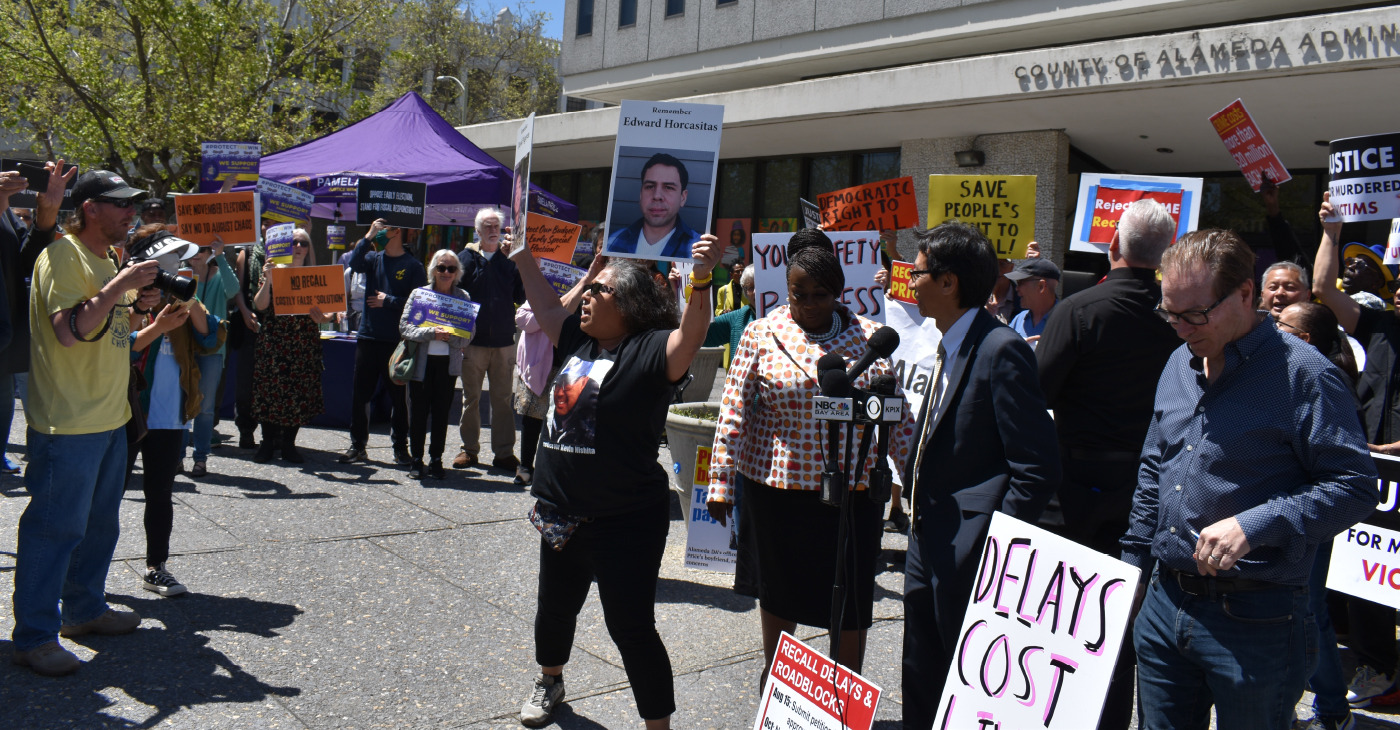
By Magaly Muñoz
The Alameda Board of Supervisors unanimously accepted the certification of the results of the valid signatures submitted for the recall of District Attorney Pamela Price on Tuesday evening. The Board will set the election date at a special meeting on May 14.
Before the meeting, recall proponents and opponents held separate press conferences to plead their cases to the Board and residents of Alameda County.
Price, who up until this point has made little public comment about the recall, held her press conference in Jack London to announce that the California Fair Political Practices Commission has opened an investigation into the finances of the Save Alameda For Everyone (SAFE) recall campaign.
The political action committee (PAC), Reviving the Bay Area, has been the largest contributor to the SAFE organization and has allegedly donated over half a million dollars to the recall efforts.
“Between September 2023 and November 2023, [Revive the Bay Area] donated approximately $578,000 to SAFE without complying with the laws that govern all political committees in California,” Price said.
Price accused the recall campaigns of using irregular signature-gathering processes, such as paying gatherers per signature, and using misleading information to get people to sign their petitions.
SAFE held their own press conference outside of the Alameda County Administration Building at 1221 Oak St. in Oakland, once again calling for the Board to certify their signatures and set a date for the recall election.
Their press conference turned contentious quickly as Price’s “Protect the Win” supporters attempted to yell over the SAFE staff and volunteers. “Stop scapegoating Price” and “Recall Price” chants went on for several moments at a time during this event.
Families of victims urged the Board to think of their loved ones whose lives are worth much more than the millions of dollars that many opponents of the recall say is too much to spend on a special election.
The Registrar of Voters (ROV) estimates the special election could cost anywhere from $15 to $20 million, an amount that is not in their budget.
The Board was presented with several options on when and how to conduct the recall election. They have to set a date no less than 88 days or more than 125 days after May 14, meaning the date could fall anywhere from late July to September.
But the County charter also states that if a general election takes place within 180 days of their scheduling deadline, the Board could choose to use the November ballot as a way to consolidate the two events.
In the event that Price is recalled, the Supervisors would appoint someone to fill the vacancy, though neither the County nor the California charter specifies how long they would have to pick a replacement.
The appointee would serve as district attorney spot until the next election in 2026. Afterwards, either they, if they run and win, or a newly elected candidate would serve the rest of Price’s six-year term until 2029. Price is unique as the only district attorney wo serves a term of six years.
The Board acknowledged that they knew last fall that this recall would come with its own set of complications when Measure B, which changed the local recall charter to match California’s, was first brought to their consideration.
Supervisors Nate Miley and David Haubert opposed discussing the measure, stating that the public would think that the Board was attempting to influence the recall campaign that had already taken off months prior.
“I think ultimately this feels like it’s going to end up in court, one way or the other, depending on who files what,” Haubert said.
Price’s legal team told the Post that the district attorney intended to consider all legal options should the recall election take place.
Miley stated that while he was in support of the amendment to the charter, he did not think it was right to schedule it for the March ballot as it would ultimately cause confusion for everyone involved.
“It has produced some legal entanglements that I think, potentially, could’ve been avoided,” Miley said.
Commentary
Opinion: Lessons for Current Student Protesters From a San Francisco State Strike Veteran
How the nation’s first College of Ethnic studies came about, bringing together Latino, African American and Asian American disciplines may offer some clues as to how to ease the current turmoil on American college campuses over the Israel-Hamas war. After the deadline passed to end the Columbia University encampment by 2 p.m. Monday, student protesters blockaded and occupied Hamilton Hall in a symbolic move early Tuesday morning. Protesters did the same in 1968.

By Emil Guillermo
How the nation’s first College of Ethnic studies came about, bringing together Latino, African American and Asian American disciplines may offer some clues as to how to ease the current turmoil on American college campuses over the Israel-Hamas war.
After the deadline passed to end the Columbia University encampment by 2 p.m. Monday, student protesters blockaded and occupied Hamilton Hall in a symbolic move early Tuesday morning.
Protesters did the same in 1968.
That made me think of San Francisco State University, 1968.
The news was filled with call backs to practically every student protest in the past six decades as arrests mounted into hundreds on nearly two dozen campuses around the country.
In 1970, the protests at Kent State were over the Vietnam War. Ohio National Guardsmen came in, opened fire, and killed four students.
Less than two weeks later that year, civil rights activists outside a dormitory at Jackson State were confronted by armed police. Two African American students were killed, twelve injured.
But again, I didn’t hear anyone mention San Francisco State University, 1968.
That protest addressed all the issues of the day and more. The student strike at SFSU was against the Vietnam war.
That final goal was eventually achieved, but there was violence, sparked mostly by “outside agitators,” who were confronted by police.
“People used the term ‘off the pigs’ but it was more rally rhetoric than a call to action (to actually kill police),” said Daniel Phil Gonzales, who was one of the strikers in 1968.
Gonzales, known as the go-to resource among Filipino American scholars for decades, went on to teach at what was the positive outcome of the strike, San Francisco State University’s College of Ethnic Studies. It’s believed to be the first of its kind in the nation. Gonzales recently retired after more than 50 years as professor.
As for today’s protests, Gonzales is dismayed that the students have constantly dealt with charges of antisemitism.
“It stymies conversation and encourages further polarization and the possibility of violent confrontation,” he said. “You’re going to be labeled pro-Hamas or pro-terrorist.”
That’s happening now. But we forget we are dealing not with Hamas proxies. We are dealing with students.
Gonzales said that was a key lesson at SF State’s strike. The main coalition driving the strike was aided by self-policing from inside of the movement. “That’s very difficult to maintain. Once you start this kind of activity, you don’t know who’s going to join,” he said.
Gonzales believes that in the current situation, there is a patch of humanity, common ground, where one can be both pro-Palestine and pro-Israel. He said it’s made difficult if you stand against the belligerent policies of Benjamin Netanyahu. In that case, you’re likely to be labeled antisemitic.
Despite that, Gonzales is in solidarity with the protesters and the people of Gaza, generally. Not Hamas. And he sees how most of the young people protesting are in shock at what he called the “duration of the absolute inhumane kind of persecution and prosecution of the Palestinians carried out by the Israeli government.”
As a survivor of campus protest decades ago, Gonzales offered some advice to the student protesters of 2024.
“You have to have a definable goal, but right now the path to that goal is unclear,” he said.
About the Author
Emil Guillermo is a journalist and commentator. A veteran newsman in TV and print, he is a former host of NPR’s “All Things Considered.”
Community
Gov. Newsom, Attorney General Bonta Back Bill to Allow California to Host Arizona Abortion Care
Gov. Gavin Newsom and Attorney General Rob Bonta announced last week that they are backing a bill introduced by the state legislative women’s caucus that would allow Arizona-based doctors to provide abortion care in California to patients from Arizona. Senate Bill (SB) 233 was authored in response to the Arizona Supreme Court’s decision on April 9 that an 1864 ban on abortion in the state is enforceable.
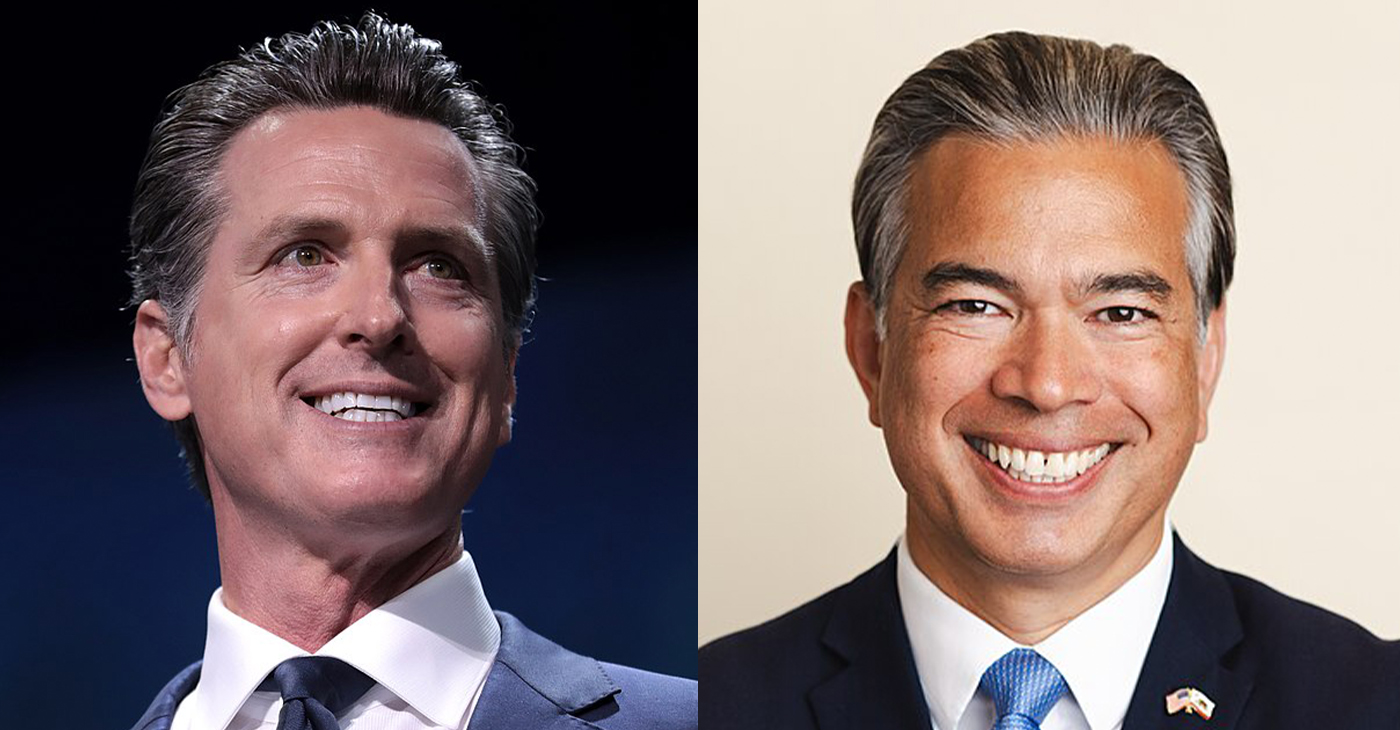
By California Black Media
Gov. Gavin Newsom and Attorney General Rob Bonta announced last week that they are backing a bill introduced by the state legislative women’s caucus that would allow Arizona-based doctors to provide abortion care in California to patients from Arizona.
Senate Bill (SB) 233 was authored in response to the Arizona Supreme Court’s decision on April 9 that an 1864 ban on abortion in the state is enforceable. The bill also aims to counter growing support for anti-abortion legislation in states with Republican-majority legislatures since Roe v. Wade was overturned, according to supporters.
“California will not sit idly by. We’re urgently moving legislation to allow Arizona doctors to provide safe and reliable reproductive care to Arizonans here in California,” Newsom said.
Sen. Nancy Skinner (D-Berkeley), chair of the California Legislative Women’s Caucus said that abortion bans are based on laws that set women back to a time when they had limited human rights.
“Anti-abortion forces have resurrected a dead law passed at a time when women couldn’t vote and husbands beating their wives was lawful,” Skinner said.
On April 24, the Arizona House of Representatives voted to repeal the 1864 abortion ban. It now moves to the Arizona Senate for deliberation.
-

 Community2 weeks ago
Community2 weeks agoFinancial Assistance Bill for Descendants of Enslaved Persons to Help Them Purchase, Own, or Maintain a Home
-

 Activism4 weeks ago
Activism4 weeks agoOakland Post: Week of April 3 – 6, 2024
-

 Business3 weeks ago
Business3 weeks agoV.P. Kamala Harris: Americans With Criminal Records Will Soon Be Eligible for SBA Loans
-

 Activism3 weeks ago
Activism3 weeks agoOakland Post: Week of April 10 – 16, 2024
-

 Community3 weeks ago
Community3 weeks agoAG Bonta Says Oakland School Leaders Should Comply with State Laws to Avoid ‘Disparate Harm’ When Closing or Merging Schools
-

 Community2 weeks ago
Community2 weeks agoOakland WNBA Player to be Inducted Into Hall of Fame
-

 Community2 weeks ago
Community2 weeks agoRichmond Nonprofit Helps Ex-Felons Get Back on Their Feet
-

 Community2 weeks ago
Community2 weeks agoRPAL to Rename Technology Center for Retired Police Captain Arthur Lee Johnson



